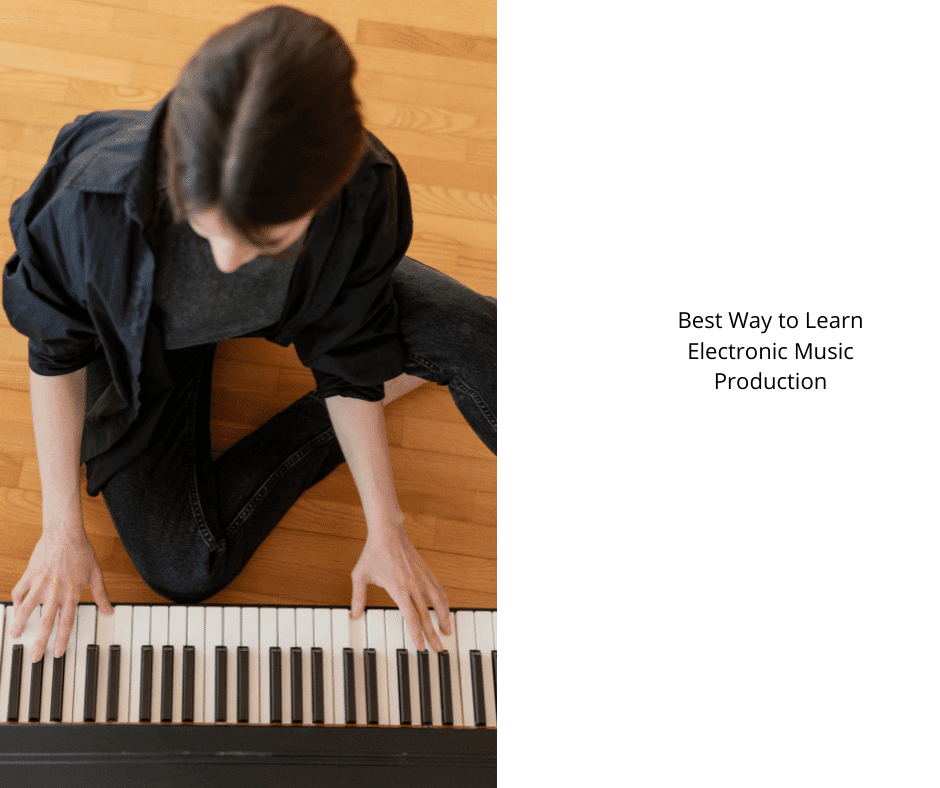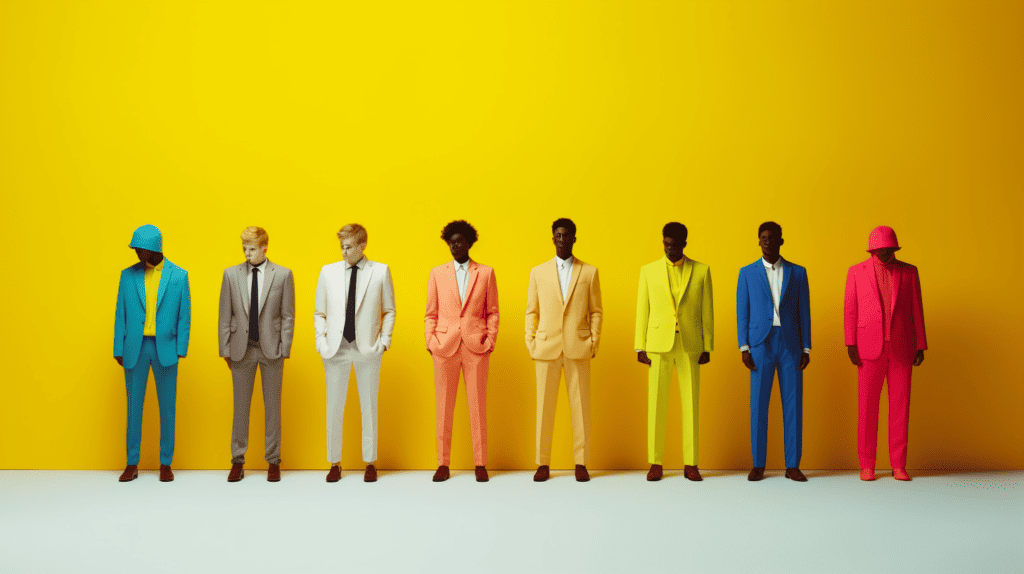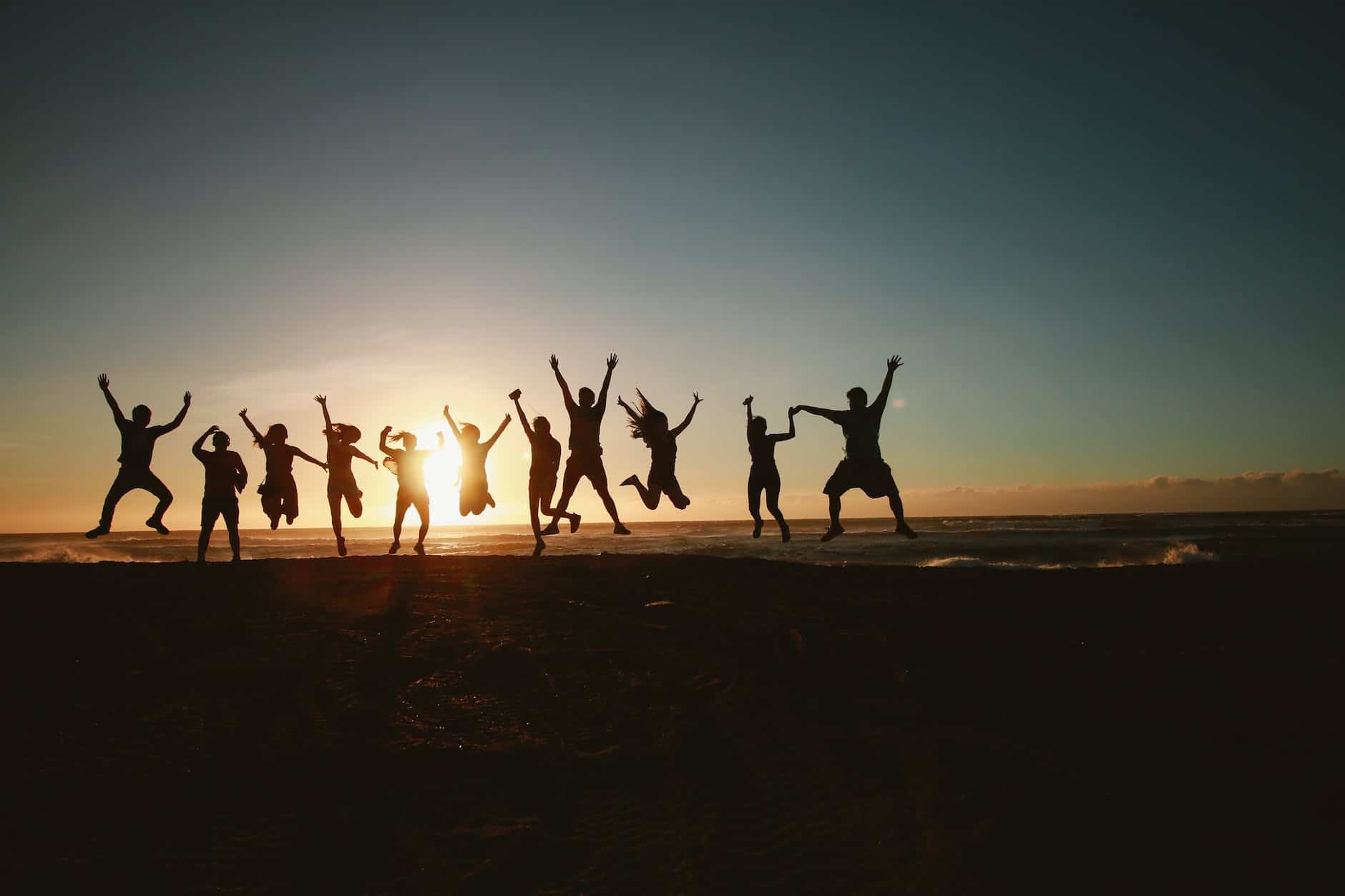Expert Guides
Best Way to Learn Electronic Music Production

There are many ways to learn electronic music production. You can use free trial versions of Ableton Live, FL Studio, or Udemy to try out the course material before buying the software or spending money on a DAW. These free trials will help you choose the right method for you.
There are many ways to get into electronic music production. You can choose a program, take lessons or just start making beats using your own equipment.
Learn the Basics
To become a good electronic music producer, it’s important that you first learn the basics of music theory. You must also learn about the different parts of a song and how they fit together. For example, if someone were to ask you what drums or percussion instruments are used in electronic music production, what would you say? Would you be able to tell them?
There are many different types of music genres and instruments used in producing electronic music. Learning these things is important because they can help influence your creative process when making new songs.
Watch Tutorials
- Tutorials are a great way to learn new skills and expand your knowledge base. You can find tutorials on YouTube, books at the library, or even music stores!
- There are many different types of tutorials: beginner-level courses that teach you the basics; advanced courses that dive into more complex techniques; and even master classes with industry professionals sharing their secrets.
YouTube
YouTube is an excellent resource for anyone just starting out in electronic music production. Hundreds of channels cover all aspects of the production process, from sound design to music theory. You’ll also find kit reviews and masterclasses from some of the biggest names in the business.
Many of these channels have beneficial videos, and you can often learn more from them than you could ever learn on your own. Andrew McMillan’s YouTube channel has hundreds of videos about synths. His tutorials are comprehensive and you can get a preview of his channel for free. If you’re interested in learning more, he also has a subscription-based program called ADSR.
Red Means Recording
Jeremy, aka Red Means Recording. Jeremy is probably best known for making music and videos with the Teenage Engineering OP-1 digital synthesizer. You’re probably best known for something pretty awesome, too.
Red Means Recording make music with a variety of things, including Ableton and some hardware synthesizers. He makes video using After Effects, Premiere, and other tools.
You can also use a digital audio workstation to record and edit tracks. MusicTech Magazine has step-by-step tutorials for popular DAWs and general articles. Another great resource is the ROLI website, which features free tutorials for using the company’s products.
There is no better way to learn electronic music production than watching videos and listening. You can follow some of the top producers in the world and pick the ones you want to emulate. Remember always to get feedback. Though it can be intimidating initially, feedback is crucial for your development as an electronic music producer.
Once you’ve decided to pursue electronic music production, research different artists and genres. Once you have chosen a genre, you can explore other techniques that will suit your style and preferences. Next, you will need to choose the right DAW. Many free options are available on the Internet, and many online courses are designed specifically for DAWs.
Exponential Learning
There are many ways to learn electronic music production. You can start with the basics or go deeper into mixing and producing the music you are interested in. It doesn’t matter what level you are at, it is essential to know your tools. Online courses can also help you learn more and speed up your learning curve.
Getting a digital audio workstation is an essential first step. Many beginners start with FL Studio, but many other software programs are available, such as sylenth, which can give you many different sounds. Once you have your DAW, you can begin learning about audio, equalizing, and mixing.
One way to learn how to create your beats is to learn from a master. You can experiment without fear by mastering a technique. This can allow you to create new songs or create new genres. In addition to learning from a master, you can learn from others. Study their music and re-create it. This will encourage you to listen attentively, explore new ideas, and solve problems.
Another approach is to learn by making samples of your work. Creating a sampled performance of a new song will give you a sense of how the composition sounds. This is an important technique because it improves your aural imaging. When a piece is not produced well, it won’t sound as good as it could be.
Go Through a Program or Take Lessons
If you want to start learning electronic music production, consider taking a class or going through a program.
Any good teacher will have some sort of background in music since this is key to their teaching ability and effectiveness. This means that they can often relate their own experiences as a musician and help students understand the concepts better.
When looking for a class or program, look for one that is affordable and has good reviews.
Online Courses
If you’d like to learn how to make your electronic music, you can take several online courses. Some courses are more interactive and structured than others and can be very affordable. There are some things you should keep in mind if music production is something that interests you.
One of the most significant benefits of online courses is the flexibility and cost. It’s less expensive than attending classes in your area, and you can combine your online study with your full-time job. The online courses are also a great way to keep your grades up since you can simply type your assignments online.
Many online courses offer certificate programs. Some courses even offer student discounts on some of the popular software used by music producers. For instance, the Hans Zimmer course from Masterclass can give you the skills and knowledge necessary to create music for film. Udemy and Point Blank Music School also offer online courses in film scoring.
Another online course for learning electronic music production is called Sound Academy. This course is for intermediate and advanced music producers. This course features mini-lessons on specific topics that will help you to work on your music production. It also provides tips and tricks that can be applied immediately. This course, while more expensive than some of the other options, is a good option if you’re looking for a hands-on approach to learning music production.
A good course will show you how to create sound through looping, layering, and mixing. This course also emphasizes developing your ear for music and collaboration with other producers. You will be able to analyze the sounds of world-class artists and learn the techniques they use to produce great music.
Preset Banks
A preset bank is the best way to start electronic music production. This will give you a solid foundation and help you expand your sound design options. You will find hundreds, if not thousands of sounds in the best-preset banks. You can use them to create a range of sounds that will make your songs sound more professional.
The first step to becoming a good EDM producer is learning music theory. This theory is crucial for every single track that you make, and learning it will help you make better tracks faster. It’s like having a superpower: understanding music theory gives you more creative freedom.
Bank Samples
Sample banks are an excellent way to start learning electronic music production if you’re just starting out. These sample banks are designed to help you create your own sounds without paying for expensive samples or downloading the wrong ones. Some sample banks can have sub-par sound quality.
Sample creation involves many steps. This includes individual song ideas, drums and sound FX loops. It’s a fast-paced process that requires constant inspiration and rapid recording. Once the samples are recorded, they must be rendered and named.
Sample banks are a great tool for producers starting out, but it’s also a good idea learn the music theory behind each style. Knowing the basic principles behind each genre allows you to be more creative and effective. This knowledge is like a superpower that will help you produce better music in less time. Many producers make their tracks by ear, but a profound understanding of music theory will enable you to produce higher quality music faster.
Aside from sample banks, there are many other electronic music production tutorials sources. Online tutorials and forums can provide you with tips and tricks that can help you make quality music. Sample packs can also be purchased from producers such as Alin Dimitriu who has created a variety sample packs for popular genres such as Chillwave, Lo-Fi House and Indie Dance.
Using samples is an essential part of electronic music production. Classic artists like Queen, Michael Jackson, and Marvin Gaye have been sampled many times. This skill is crucial to producing quality music and can be daunting to learn. Modern sampler plugins and DAW software have impressive libraries of royalty-free sounds. The problem is knowing where to find them.
Get to Know Your Equipment
You should get to know your equipment, but it’s also important to get familiar with the actual music you’re making. You don’t need to listen to only electronic music; start by listening to all kinds of music and seeing what inspires you.
Listen for structure: How does the song flow? When does it change tempo or feel? Does one instrument take center stage? What patterns are present in the arrangement?
Listen for melodies: Do any melodies catch your ear more than others? Why do they stand out? Is there an element of repetition at play (a riff or repeated phrase)? If so, how is that riff used differently in different parts of the song—or not at all?
Learn in Several Ways
If you want to learn how to produce electronic music, there are several ways that you can go about it. But the most important thing is to create music that makes you happy. This will help you stay motivated and keep learning and give your listeners something pleasant to listen to!
To make good music, the most important thing is finding inspiration for your music. You can find inspiration by listening to other people’s music, watching movies or playing video games (or all three). If possible, try starting with a track idea before listening any other tracks so that they don’t influence your own ideas too much! The next step is recording it down into software like FL Studio or Logic Pro X using their built-in instruments such as pianos or guitars before adding effects such as reverb and pitch correction into each one individually until everything sounds perfect together… or maybe just leave them raw with no reverb at all if that works better for whatever reason too!
The last step involves finishing off by mixing everything so that none of these elements stand out above each other but instead blend seamlessly into one beautiful piece of artistry which will hopefully inspire others just like ourselves who want nothing more than making amazing-sounding songs while having fun doing it!”
Conclusion
There are many ways to learn electronic music production, but what’s most important is that you find an approach that works for you. If you feel like taking classes or getting lessons from a teacher will help motivate and inspire you, then go for it! If watching YouTube videos on how to use your software is fun for you, then do this instead of reading books or going through online courses.
Just remember not to overwhelm yourself with too much information at once—it can be overwhelming enough just learning basic skills like beat making or mixing sounds together without worrying about mastering advanced techniques simultaneously (unless those are also something that interests you).
AI Generator
Ownership Battle in the Age of AI-Generated Music

The emergence of artificial intelligence in music production has ushered in a new era of innovation. However, it has also sparked debates over ownership rights. As AI-generated music becomes more common, concerns about who owns these creations are brought to light.
This article delves into the legal battles and ethical debates surrounding AI-generated music ownership.
Defining Ownership in AI-Generated Music
In a traditional sense, determining the owner of the copyrighted material is straightforward. However, with AI-generated content, the situation becomes more complex.

Is the creator of the algorithm that generated the music the owner? Is it the person who trained the algorithm? Is it possible to claim ownership over something not directly created by human hands?
Grimes’s Controversial Tweet: A Case Study
Grimes’s tweet about allowing her voice to be used in AI-generated music exemplifies this issue. She said she would sell her digital soul for $10 million, granting an AI company permission to use her voice as they wished. The tweet sparked controversy, with some seeing it as selling out and others viewing it as a clever move.
Legal Battles and Intellectual Property
Ownership rights of AI-generated music are just starting to be tested in courts. In 2018, Sony won a landmark case against musician Kevin Parks Jr., who claimed he had created songs using Sony’s software without permission or compensation. The court ruled in favor of Sony since their software was used in creating Parks’ songs.
This ruling raises questions about whether algorithms can be considered intellectual property or merely tools used by creators. If algorithms are deemed intellectual property, there may be issues surrounding their licensing for commercial use.
Record Labels and the Changing Dynamics
As record labels adapt to the rise of AI-generated content, they, too, must confront ownership rights issues. Record labels have historically owned much of the copyright associated with artists’ work; however, this dynamic may change as more artists turn to AI-generated music.
If an artist uses an AI program to create a piece of music, who owns the rights to that work? Is it the artist or the creator of the algorithm that generated it?
Implications for Streaming Platforms
The rise of AI-generated music also impacts streaming platforms like Spotify and Apple Music. These platforms have already faced criticism for their low royalty payouts to artists, and if AI-generated content becomes more prevalent, this issue may only worsen.
Additionally, as record labels lose some control over ownership rights, they may push for higher payouts from these streaming services.
Public Domain and AI-Generated Music
The implications of AI-generated music on the public domain are worth considering. AI algorithms often use existing music data to create new compositions, raising questions about whether AI-generated music should be considered part of the public domain or if new legal frameworks are needed to protect both original creators and AI developers.
When an AI algorithm generates music based on existing works, it can be difficult to determine if the resulting composition is a derivative work or an entirely new creation. If AI-generated music is considered part of the public domain, it may limit the rights of original creators whose work was used as input. On the other hand, if AI-generated music is granted copyright protection, it could potentially stifle creativity and limit access to cultural works.
Moral Rights and AI-Generated Music
The concept of moral rights is particularly relevant in the context of AI-generated music. Moral rights protect an artist’s right to be recognized as the creator of their work and to preserve the integrity of their creations. It is important to discuss how moral rights might apply to AI-generated music and the potential challenges that may arise.
In the case of AI-generated music, it can be difficult to determine who should be recognized as the creator: the original artist whose work was used as input, the developer of the AI algorithm, or both. Additionally, AI-generated music may inadvertently modify or distort the original work, potentially violating the moral rights of the original creator.
AI-Generated Music and Fair Use
The concept of fair use plays a significant role in the context of AI-generated music. Fair use is a legal doctrine that allows for the limited use of copyrighted material without requiring permission from the rights holder. It is important to discuss whether AI-generated music, which often relies on existing music data, can be considered fair use and the potential legal implications that may arise.
When AI algorithms use existing music as input, they may be seen as transformative, creating new works based on the original material. However, the extent to which AI-generated music can be considered fair use is not yet clearly defined in the law, and it may vary depending on the degree of transformation and the potential market impact on the original work.
In conclusion, addressing the additional topics of public domain, moral rights, and fair use in AI-generated music contributes to a more comprehensive understanding of the various legal and ethical issues surrounding this emerging technology. As AI-generated music becomes more prevalent, it is crucial for legal frameworks and industry practices to adapt in order to balance the rights of creators, AI developers, and the public interest.
The Future of Ownership Rights
In conclusion, ownership rights in the era of AI-generated music are uncertain at best. As more legal battles arise and ethical debates continue, it is clear that traditional copyright laws will need to adapt to keep up with technological advancements.
The struggle for ownership is just beginning, but it will undoubtedly shape the future of the music industry for years to come.
AI Generator
The Influence of Artificial Intelligence on The Creation of Music

A New Era of Creativity and Expression
Music has always been a strong reflection of human innovation and emotions. Throughout history, our voices and musical instruments have played a crucial role in expressing our feelings, telling stories, and building relationships with others. As technology has advanced, our ways of creating music have also progressed.
Modern musicians now have access to various tools, enabling them to manipulate sound in unimaginable ways. Synthesizers can emulate virtually any sound, while digital audio workstations facilitate precise editing and manipulation of recorded tracks. And now, the rise of artificial intelligence (AI) offers musicians even more possibilities for music creation.
AI Applications in the Music Industry
AI is being utilized in multiple ways within the music industry. One popular application is generating original compositions based on existing musical data sets. By analyzing millions of songs across genres and periods, AI algorithms can identify patterns and generate new melodies or chord progressions that fit within those patterns.

Another application involves using AI to enhance existing performances or recordings. For instance, software like iZotope’s RX can isolate individual instrumental tracks from a mix and remove unwanted noise or artifacts without impacting the rest of the recording.
Unintended Consequences and Concerns
However, as with any emerging technology, unintended consequences arise from using AI in music creation. One worry is that AI-generated music might lack the emotional depth and nuance that human performance offers. While an algorithm can create technically proficient melodies or chord progressions, it may not capture the same sense of emotion or passion found in a live performance.
Another concern revolves around ownership rights of AI-generated music. If an algorithm generates an original composition based on data sets owned by multiple parties (such as record labels or streaming platforms), who has the rights to that composition? This question has already sparked legal battles between artists collaborating with AI algorithms and those claiming ownership over their contributions.
Harnessing AI for Collaboration and Growth
Many musicians and industry professionals see AI as an opportunity for collaboration and growth. AI can be a creative assistant, inspiring artists, helping them overcome writer’s block, or even offering suggestions to improve their compositions. As AI technology continues to evolve, its ability to learn from and adapt to a musician’s style will improve, further enhancing the creative process.
AI in Music Education and Talent Discovery
AI also has the potential to revolutionize music education and talent discovery. With AI-powered music learning apps and platforms, students can receive personalized instruction based on their skill level and learning style. Furthermore, AI can analyze and identify undiscovered talent by evaluating their performances and predicting their potential for success.

Addressing Ethical Considerations and Regulations
To ensure the responsible integration of AI into the music industry, it is essential to address ethical considerations and establish regulations. For instance, guidelines should be set to ensure that AI-generated compositions do not infringe on existing copyrights or that AI technology is not used maliciously to plagiarize or manipulate the work of others.
Additionally, as AI-generated music becomes more prevalent, it is crucial to develop clear standards for crediting the contributions of both human artists and AI algorithms to a given work. This will help to prevent legal disputes and foster a fair and transparent environment for all parties involved.
Ethical Considerations in AI-Generated Music
As AI-generated music becomes increasingly widespread, various ethical concerns emerge. Some of these concerns include the potential for AI-generated music to contribute to cultural appropriation, the dilution of traditional music styles, or the homogenization of music in general.
Cultural Appropriation
Cultural appropriation occurs when elements of one culture are adopted or used by members of another culture, often in a way that is disrespectful or exploitative.

AI-generated music, which often relies on large datasets of existing music, might inadvertently incorporate elements of various cultures without giving proper credit or understanding the cultural context. This can result in the misrepresentation or trivialization of the original culture and may lead to further marginalization of underrepresented communities.
Dilution of Traditional Music Styles
AI-generated music algorithms are often designed to identify popular patterns and trends within the music they analyze.
As a result, the output may lean heavily toward mainstream or widely-accepted styles, which can dilute traditional or less-popular music styles. Over time, this may result in a decline in the diversity of music genres and a loss of unique cultural expressions and heritage.
Homogenization of Music
The widespread use of AI-generated music could also contribute to the homogenization of music, as algorithms tend to create compositions based on patterns and trends found in existing data. This may result in technically proficient music lacking the distinctiveness and creativity found in human-generated compositions.
As AI-generated music becomes more prevalent, there is a risk that the rich tapestry of diverse musical styles and influences may be reduced to a more uniform, less imaginative landscape.
In conclusion, while AI-generated music offers exciting opportunities for innovation and new forms of creativity, addressing and considering the ethical implications of its widespread use is crucial. It is essential to develop ways to preserve cultural diversity and respect the heritage of various music styles while embracing the potential of AI in music creation.
Embracing the AI-Infused Future of Music
The increasing influence of AI in the music industry offers an exciting new frontier for creativity, collaboration, and innovation. By addressing the potential concerns and working together to create ethical guidelines and regulations, musicians, industry professionals, and AI developers can ensure that the integration of AI into the music landscape is both responsible and beneficial.
As we embrace this AI-infused future, we can look forward to new and innovative ways to create and enjoy music, while also remaining mindful of the potential pitfalls and challenges that come with any technological advancement. With the right approach, the future of music and AI has the potential to be a harmonious and groundbreaking partnership.
Despite these concerns, it’s undeniable that AI is revolutionizing the music industry in thrilling ways. It enables new forms of creativity and experimentation while also presenting unique challenges for artists and record labels alike. As we continue to navigate this new era of music creation, it will be fascinating to see how these unintended consequences evolve.
Podcast
Bridging the Gap: Harnessing the Power of Podcasts and Videos to Connect Communities with Vital Services

Podcasts and Videos in Community Services
Community support services are essential for helping those in need, but many individuals are unaware of the resources available to them. This is where podcasts and videos play a vital role as powerful tools for educating and engaging community members.
By creating audio and visual content that highlights the impact of community services, organizations can bridge the gap between service providers and the people they serve.
In this blog post, we will explore the various benefits of incorporating podcasts and videos into community services strategies and best practices for creating engaging content.
The Role of Podcasts and Videos in Strengthening Community Services
Podcasts and videos are a powerful way to communicate with community members and inform them of available services. Through audio and visual content, community service organizations can educate and engage their audience.
Podcasts and videos can help bridge the gap between community members and service providers, increasing accessibility and awareness of resources. Creating content that highlights the impact of community services can inspire others to get involved and support the cause.
Podcasts and videos can also provide a platform to share personal stories and experiences, helping to break down stigma and create a sense of community.
How Podcasts and Videos Can Help Improve Access to Community Resources
Podcasts and videos can provide a medium for sharing information about important community resources in an engaging and accessible way. This is particularly important for individuals who may not have access to traditional written materials or may have language barriers. Here are some ways in which podcasts and videos can improve the accessibility of community resources:
- Breaking down language barriers: Audio and visual content can help reach individuals who may speak a different language or have limited literacy skills. By providing information in a format that doesn’t rely on reading, podcasts and videos can help ensure that more members of the community are able to access important resources.
- Providing updates: Podcasts and videos can be used to provide updates on changes to community resources such as hours of operation, new programs, or changes to eligibility criteria.
- Encouraging action: Creating content that encourages community members to take action, such as accessing resources or volunteering, can help improve utilization of services. By highlighting the benefits of certain resources, podcasts and videos can help inspire individuals to take advantage of them.
- Showcasing impact: Podcasts and videos can showcase the impact of community resources through personal stories and testimonials, further highlighting their value. By sharing stories of those who have benefited from the resources, community service organizations can emphasize the importance of accessibility to community resources.
In short, podcasts and videos can play a crucial role in improving access to community resources by breaking down language barriers, providing updates, encouraging action, and showcasing impact.

Community service organizations should consider incorporating these mediums into their outreach efforts to help ensure that important resources are accessible to all members of the community.
The Benefits of Using Audio and Video Content in Community Outreach Programs
Using audio and visual content can have many benefits for community service organizations looking to reach a wider audience and strengthen their outreach efforts. Here are some of the key advantages:
- Engaging format: Audio and video content can be more engaging and memorable than written materials, helping to capture the attention of community members and inspire them to take action.
- Accessibility: Audio and visual content can help organizations reach individuals who may not have access to traditional written materials or who speak a different language.
- Personal connection: Incorporating personal stories and testimonials can help community members feel more connected to the cause and motivated to get involved.
- Establishing expertise: Creating regular content, such as a podcast or video series, can help organizations establish themselves as thought leaders in their field and build a following.
- Collaboration: Podcasts and videos can provide a platform for collaboration and partnerships with other organizations, further strengthening the impact of community outreach programs.
Overall, incorporating audio and video content into community outreach programs can help organizations better connect with their audience, improve access to important resources, and build a stronger, more engaged community.
Using Podcasts and Videos to Enhance Volunteer Recruitment in Community Services
Volunteers are a crucial part of any community service organization. However, finding and recruiting volunteers can be a challenge. Podcasts and videos can be an effective way to enhance volunteer recruitment efforts.
Creating Content that Highlights the Impact of Volunteer Work
One of the most powerful ways to inspire people to volunteer is by showcasing the impact that their work can have. Creating content that tells the stories of volunteers and the impact they’ve had can be a powerful recruitment tool.
Consider producing videos or podcasts that feature interviews with volunteers, sharing their experiences and the change they are making in their communities. Highlighting impactful volunteer projects that have made a difference in the community can also be a great way to draw attention to volunteer opportunities.
Providing Information on Volunteer Opportunities
Podcasts and videos can also be used to provide information about volunteer opportunities. Creating a series of short videos or podcast episodes that highlight different volunteer roles and the skills needed to excel in them can be a great way to engage potential volunteers.
It can also be helpful to include information on the benefits of volunteering, such as gaining new skills, meeting new people, and making a positive impact in the community. By sharing this information in an engaging and accessible format, community service organizations can attract more volunteers and build a strong team of supporters.
Using Storytelling to Encourage Volunteer Action
Storytelling can be a powerful tool for encouraging people to take action. By sharing stories of the impact that volunteers have had in the community, organizations can inspire others to get involved.
Consider using video or audio content to showcase the experiences of volunteers and highlight the difference they have made. Encouraging existing volunteers to share their stories and experiences can also be an effective way to generate interest in volunteering and attract new supporters.
By incorporating podcasts and videos into their outreach strategies, community service organizations can enhance volunteer recruitment efforts and attract more supporters. Whether through highlighting the impact of volunteer work, providing information on volunteer opportunities, or using storytelling to encourage volunteer action, audio and visual content can be a powerful way to engage and inspire others to get involved in their communities.
Creating Engaging Video and Audio Content for Community Service Organizations
When it comes to creating content for community service organizations, it’s important to consider the audience and their preferences for consuming information. Here are some tips for creating engaging video and audio content:
- Incorporate personal stories and testimonials: By sharing personal stories of how the organization has made a difference in people’s lives, you can make the content more relatable and engaging for viewers and listeners. Testimonials can also help build credibility for the organization.
- Use visual aids: Visual aids, such as infographics, images, or animations, can help simplify complex information and make it more accessible. Consider using visual aids to break up the content and emphasize important points.
- Create a consistent style and format: Creating a consistent style and format can help build a recognizable brand and increase engagement with regular viewers and listeners. Consider using the same intro and outro music, or using the same colors and fonts throughout your content.
- Experiment with different types of content: To keep your audience engaged, consider experimenting with different types of content, such as short videos, interviews, or animations. By mixing up the format, you can keep your content fresh and interesting.
By following these tips, you can create engaging video and audio content that will help your organization connect with your audience and increase awareness of your services.
Best Practices for Incorporating Podcasts and Videos into your Community Services Strategy
Identify clear goals and objectives
Before incorporating podcasts and videos into your community services strategy, it’s important to identify clear goals and objectives. Consider what you hope to achieve through this type of content and the audience you want to reach. This will help guide your content creation and ensure that your efforts are aligned with your overall strategy.
Invest in high quality equipment and editing software
Investing in high quality equipment and editing software is essential to ensure that your content is professional and engaging. This doesn’t mean that you have to break the bank, but it’s important to have equipment that can produce high quality audio and video content.
Designate a team or individual responsible for content creation
To ensure that your content is published on a consistent basis, designate a team or individual responsible for content creation. This person should have experience with audio and video production, as well as a strong understanding of your organization’s mission and goals.
Engage with the audience through social media and other channels
Engaging with your audience through social media and other channels is key to building a following and encouraging feedback and participation. Monitor comments and respond to questions or concerns promptly to create a sense of community and encourage ongoing engagement.
Measure impact through metrics
Finally, measure the impact of your podcasts and videos through metrics such as downloads, views, and engagement to continuously improve and refine your strategy. This will help you identify what’s working and what’s not, and make data-driven decisions on how to improve your content and reach your goals.
Note: Remember to always prioritize the needs and preferences of your audience when creating content for your community services strategy. By understanding what they want and need, you can create content that resonates with them and helps build a stronger connection between your organization and the community.
Conclusion
In conclusion, podcasts and videos can be powerful tools for community service organizations to communicate with their audience and share important information about available resources. By creating engaging and informative content, these organizations can reach a wider audience and inspire individuals to get involved and support their cause. Incorporating personal stories, testimonials, and visual aids can help create a sense of community and build brand recognition.
Best practices include identifying clear goals, investing in quality equipment and software, designating a team or individual for content creation, engaging with the audience, and measuring impact for continuous improvement.
Using podcasts and videos, community service organizations can strengthen their outreach efforts and make a meaningful impact on their community.
-

 Vetted2 months ago
Vetted2 months ago11 Best Gore Websites to Explore the Darker Side of the Internet
-

 Music Theory2 weeks ago
Music Theory2 weeks agoUnlocking Nature’s Harmony: The Power of 432 Hz Frequency in Sound & Music for Enhanced Living and Well-Being
-

 Vetted1 month ago
Vetted1 month ago15 Best Commercial Vacuum Cleaners for Heavy-Duty Cleaning Jobs
-

 Vetted2 months ago
Vetted2 months ago15 Best Essential Oils Brands to Elevate Your Aromatherapy Experience
-

 Sound Design2 weeks ago
Sound Design2 weeks agoWhat Is the Difference Between a Sound Engineer and A Sound Designer?
-

 Native Instruments Kontakt2 weeks ago
Native Instruments Kontakt2 weeks agoVOCAL AI – Animated Intelligence: The Ultimate Vocal Playground
-

 Sound Design2 weeks ago
Sound Design2 weeks agoWhy Sound Engineer
-

 Vetted2 months ago
Vetted2 months ago15 Best Concrete Sealers for Ultimate Protection and Longevity








